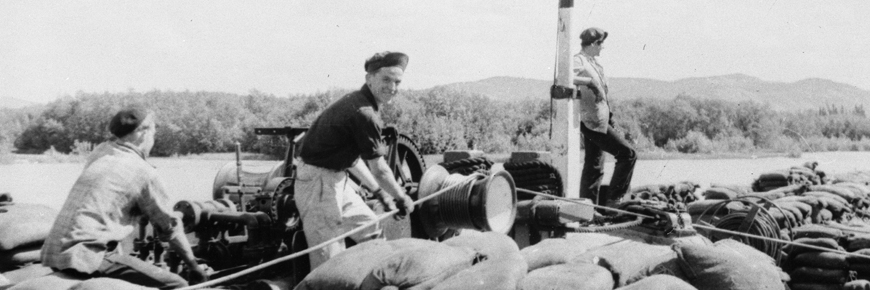
© Parks Canada / A.G. Courquin Collection
Shipboard life
S.S. Klondike National Historic Site
Ship's company
Most of the officers and crew of the British Yukon Navigation Company (BYN) fleet were hired in Vancouver each season. Their travel to the Yukon was paid for by BYN as long as they worked at least 60 days into the season. The officers and crew involved with the actual running of the boat were organized into two watches as the boats operated twenty four hours a day.
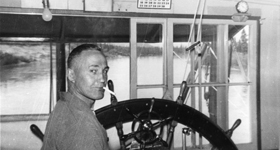
Pilots
The Master Pilot was the officer in command of the vessel to whom everyone was ultimately accountable. The Pilot was the second-in-command. He stood the opposite watch to the Master and was expected, while standing his watch, to perform all of the functions of the Master.
Pilots required a certificate of competency. It required an intimate knowledge of the river and great skill, gained only after years of experience, to manoeuvre a sternwheeler down the Yukon River. Often a Master would have started as a Mate.
Engineers
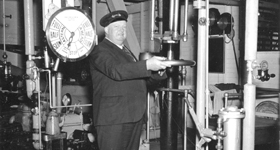
The Engineers were responsible for the functioning of the engines and other mechanical systems of the ship. Typically there would be a Chief Engineer and Second Engineer on board. In addition to maintaining the mechanical systems the engineers also controlled the speed of the vessel as directed by the Pilot in wheelhouse and oversaw the activities of the Firemen.
Firemen
The Firemen worked under the engineers. They stoked the boiler and maintained its water levels. Their job was to ensure that enough steam was being produced to meet the power requirements of the vessel, without producing more steam than was needed. They were also responsible for cleaning the boiler and keeping it in good working order. Due to the intense heat of their job, there were three Firemen on board each working four-hour watches with an eight-hour break between watches.
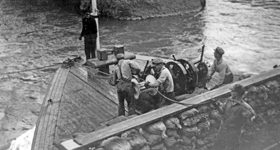
Mates
The Mates were responsible for overseeing the activities of the deck crew. The First Mate would supervise the loading of freight as it was his responsibility to ensure the proper trim of the vessel and in addition would be on hand to supervise the lining of a boat through a rapid. The Mates had to hold a certificate of competency that involved taking a course and passing an exam. Mates would often put time in steering the boat under the supervision of the Pilot in order to gain the experience needed for eventual promotion.
Deck crew
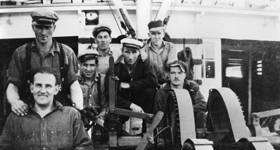
The deck crew reported to the mates. The deck hands would load and unload the freight, clean the freight deck, load the fuel wood, keep the Fireman supplied with fuel wood and provide the physical labour associated with a range of other jobs including lining the boat up through rapids, repairing a broken rudder, or getting a grounded vessel moving again. The deck-boy got stuck with fetching coffee and doing much of the cleaning.
The deck crew were organized into two watches, but were on call 24 hours a day. They would however be paid overtime if their hours exceeded their usual shift length. While most of the deck crew were hired from outside the Yukon at the beginning of each season, local First Nations people were also hired to replace those who left and to provide additional manpower during busy times.
Purser
The Purser was the company's business representative who dealt with most of the required paperwork. Responsible for the delivery of freight, mail and passengers, the Purser was the one who compiled the landing list. He also dealt with the crew's pay roll, was an American Express agent and kept records of wood consumption for the management of wood contracts.
Chief Steward
The Chief Steward ensured the boat was adequately provisioned with food and household supplies. He also set the menus; was responsible for first aid on board; sold tobacco, candy and post cards; and organized activities for the first class passengers; and, supervised the galley and cabin crews.
Galley crew
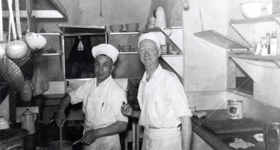
The galley crew included the Chief Cook, Second Cook, Pantry Man and Mess Boy. They were collectively responsible for preparing all of the meals for the crew and passengers. Although not eligible for overtime pay, the galley crew made a higher wage than the deck crew. They also sold kitchen waste and food scraps along the river to supplement their income.
Cabin crew
The cabin crew was responsible for the comfort of the passengers and officers. They were both cabin stewards and waiters. After serving breakfast in white shirts and bow ties, they would change into work clothes to make beds, change towels, and clean the cabins and washrooms.
Passengers
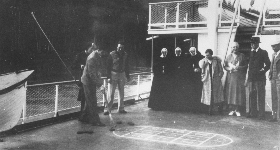
The Klondike was built in 1929 with minimal accommodation for passengers, as its main purpose was to carry freight and ore. Its replacement, the Klondike II started with 32 berths for passengers. Some passengers used the riverboats to travel between Whitehorse and Dawson City. Others caught a ride to get them back to their camps or mines along the route.
First class passengers slept in staterooms, had the run of the ship (except for the Texas deck where the officers had their sleeping quarters) and partook of diversions such as shuffleboard, badminton, card tournaments, fishing or simply touring the boat. Those who paid a lower fare slept in bunks lashed to the stanchions of the freight deck, or simply on the deck itself. While second-class passengers had access to the sun deck, deck fare passengers and work-a-ways were restricted to the freight deck.
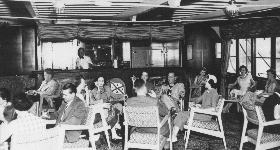
Records from 1946 to 1949 show the Klondike was licensed to take a maximum of 77 passengers. As there were only 32 stateroom berths, only 32 of these 77 could have travelled in first class. New fire regulations in 1950 reduced the number to 25 first class and 25 second class passengers.
In the Klondike's last days, she was refurbished as a cruise ship. In 1955 – the last year the vessel travelled the river – the number of passenger berths was increased to 150. Unfortunately, high operational costs undermined the venture and the Klondike's career came to an end in August of that year.
- Date modified :